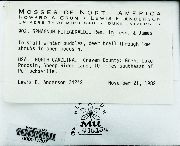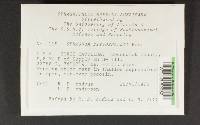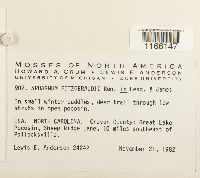
Consortium of Bryophyte Herbaria
- building a Consortium of Bryophytes and Lichens as keystones of cryptobiotic communities -
|
|
|
|
Family: Sphagnaceae
Fitzgerald's sphagnum
[Sphagnum mohrianum Warnst., more] |
|
Powered by Symbiota.



















































































